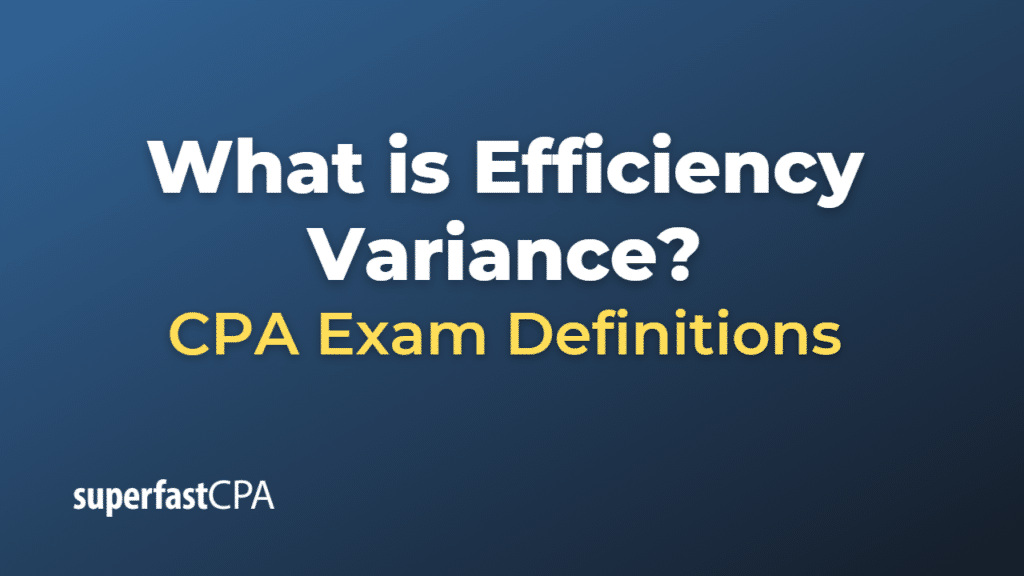Efficiency Variance
Efficiency variance is a term used in managerial accounting and cost accounting. It refers to the difference between the actual usage of a resource (such as labor, materials, or overheads) in the production process and the standard usage of the resource according to budgeting or planning, adjusted for the standard cost of the resource.
There are three main types of efficiency variances:
- Labor Efficiency Variance: This refers to the difference between the actual hours of labor used and the standard hours that should have been used, multiplied by the standard hourly labor rate.
- Materials Efficiency Variance: This measures the difference between the actual quantity of material used and the standard quantity that should have been used, multiplied by the standard cost per unit of material.
- Variable Overhead Efficiency Variance: This relates to the difference between the actual hours of labor used and the standard hours that should have been used, multiplied by the standard variable overhead rate per labor hour.
If a company uses less of a resource than the standard, it will have a favorable efficiency variance. Conversely, if it uses more of a resource than the standard, it will have an unfavorable efficiency variance. Managers often use efficiency variance analysis to identify inefficiencies and improve the company’s operations.
Example of Efficiency Variance
Let’s take an example of labor efficiency variance in a hypothetical situation.
Let’s say, for instance, that ABC Manufacturing estimates that it should take 3 hours to produce one unit of a product, with a standard labor cost of $20 per hour. So, the standard labor cost per unit is 3 hours/unit * $20/hour = $60/unit.
Now, let’s say that in one month, ABC Manufacturing produces 1000 units. According to the standard, it should therefore have taken 3,000 hours of labor (3 hours/unit * 1000 units).
However, due to various factors, perhaps the company actually used 3,200 hours of labor to produce these 1000 units.
The labor efficiency variance can now be calculated as:
(Standard hours – Actual hours) * Standard rate =
(3,000 hours – 3,200 hours) * $20/hour
= -200 hours * $20/hour
= -$4,000
Because the company used more hours than the standard, this is an unfavorable variance. This could be due to several reasons such as lower worker productivity, machine breakdowns, etc.
ABC Manufacturing would now analyze this variance to identify the reasons and take corrective actions to improve its labor efficiency.













